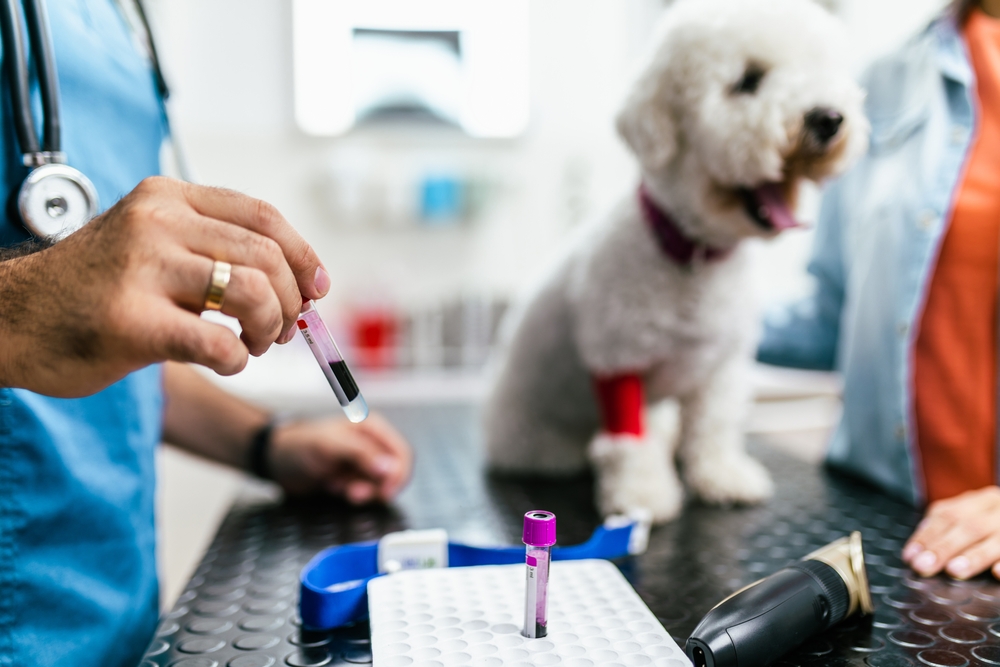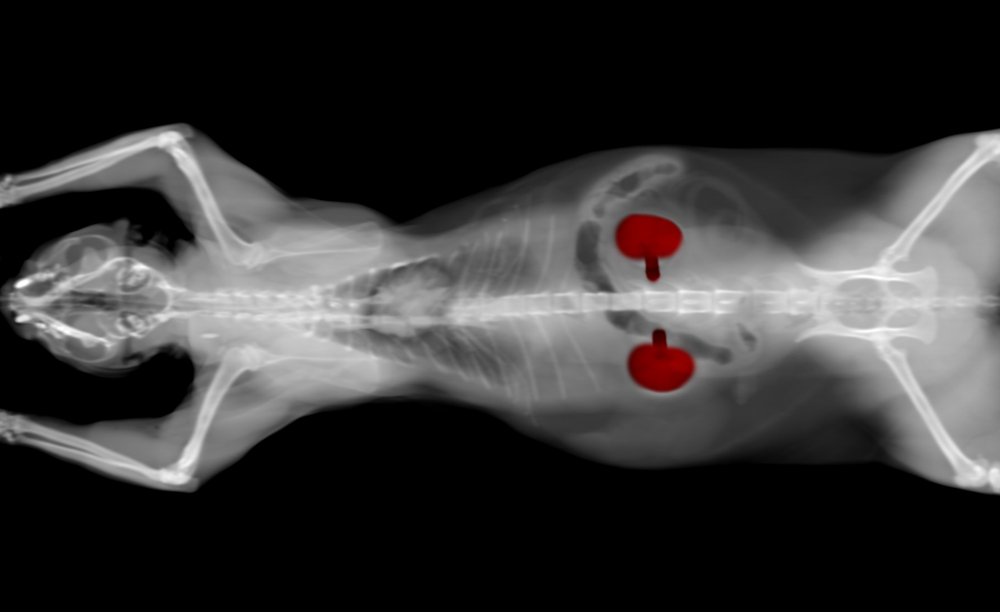Chronic kidney disease (CKD) affects up to 10% of older dogs and 35% of older cats, and in some cases, can also impact young or middle-aged pets. Despite treatment, CKD has no cure and can significantly shorten a pet’s life span. However, early diagnosis and dietary interventions can help slow the disorder’s progression and add years to affected pets’ lives. To help you understand renal disease and what you can do to give your pet the best chance for early diagnosis and successful treatment, read our Best Friends Veterinary Care team’s guide to early CKD detection.
Chronic kidney disease in pets
CKD is a progressive and destructive disorder that results in eventual kidney failure. The kidneys eliminate metabolic waste products through urine while conserving important nutrients in the blood. These organs also play a role in red blood cell production, blood pressure management, hydration, and fluid balance.
When CKD strikes, the kidney filter cells begin to die. At first, the other cells can compensate, but eventually, the organs’ filtering capacity declines, manifesting as illness signs. Kidney disease causes vary and include genetics, infections, autoimmune disease, or cancer, but in most cases, the underlying cause for a cat’s or dog’s condition is never detected.
Chronic kidney disease signs in pets
CKD causes waste products to build up in the blood (i.e., azotemia). Azotemic pets become nauseated easily and feel generally unwell because of the toxins circulating in their bodies. In the early disease stages, most pets feel and behave completely fine. The first noticeable CKD sign may be increased drinking and urination, or the urine’s diluted appearance. Once azotemia sets in, your pet may exhibit the following additional signs:
- Vomiting
- Nausea or drooling
- Poor appetite
- Weight loss
- Dehydration
- Bad breath
- Lethargy
- High blood pressure
- Blindness from high blood pressure
Diagnosing and treating chronic kidney disease in pets
CKD is categorized in stages one through four, based on disease severity. Veterinarians can also determine disease substages based on secondary measures, such as urine protein loss or elevated blood pressure. Disease stages one and two are easy to miss and may go undiagnosed for a long period. Your pet begins exhibiting disease signs when their condition advances to stages three and four, and laboratory test results will also show changes at this point. Helpful tests for diagnosing CKD include the following:
- Blood chemistry panel, specifically blood urea nitrogen (BUN) and creatinine levels
- Complete blood cell (CBC) count
- Urinalysis
- Urine culture
- Abdominal X-rays
- Abdominal ultrasound
Once our Best Friends Veterinary Care team diagnoses your pet’s CKD, we initiate treatments to help slow the condition’s progression and address secondary complications to help your furry pal feel better. However, treatments cannot reverse or stop the disease. Pets’ CKD treatment options may include the following:
- Prescription diet to reduce kidney workload.
- Medications to lower blood pressure and reduce urine protein loss.
- Medications to reduce nausea and improve appetite.
- Supplements to balance important electrolytes and minerals.
- Fluids administered under the skin to maintain hydration.
Symmetric dimethylarginine testing and early kidney disease diagnosis in pets

Traditional CKD diagnosis can be made when the creatinine blood marker is slightly elevated, and urine may also become slightly less concentrated. This testing method can miss some CKD cases, because creatinine elevations may be extremely subtle and remain within the normal laboratory reference range, which can hide impending kidney cell loss. A pet’s hydration status and illnesses that impact body muscle condition may also affect their creatinine level.
A new blood marker, symmetric dimethylarginine (SDMA), came onto the scene within the last decade and has revolutionized CKD diagnosis. Studies show that SDMA elevates up to 18 months before creatinine, and before a pet exhibits illness signs. If SDMA elevations are persistent and our Best Friends Veterinary Care team can detect no other underlying cause, early-stage CKD is presumed, and we initiate treatment to reduce the kidney workload. Treatments at this stage can protect an affected pet from additional kidney damage and effectively halt disease progression for an extended period.
To help our team diagnose your pet’s CKD in the early stage, you must ensure your dog or cat has annual wellness examinations and diagnostic screening tests that include SDMA. By performing your pet’s serial blood panels, our team has the best chance at detecting a slight change year over year, and we can intervene before your pet feels ill. Our team also recommends frequent monitoring to check for disease progression and complications such as high blood pressure or weight loss.
Prevent CKD from sneaking up on you and your four-legged friend by ensuring they undergo annual wellness diagnostic screening tests. Comparing your pet’s test results each year helps us detect CKD early and initiate life-extending treatments. Schedule your furry pal’s routine visit with our Best Friends Veterinary Care team, and learn about wellness screening recommendations for all of your pet’s life stages.








Leave A Comment